I get asked a lot to recommend the best Internet setup for boats. Below are my recommended system designs. There are several different choices depending on your technical ability and budget.
Newer Article Available
There is a newer version of this article at Recommended Internet Systems & Cellular Plans. Please use that article instead of this one!

Revision History
2019 – September – Created
2019 – December – new best LTE antenna – Poynting
2020 – August – updated link to new system on Rendezvous + Nighthawk + CAT18 options
2021 – March – new article available with better options and choices
Choosing a system
There are generally two major variables in choosing a system – your budget and your skills.
My advice when choosing a system: spend as much as you can budget-wise to ensure you get the highest performing, easiest to use system with the most features. Just like many other industries, you get what you pay for, and if you go cheap, you will need to do more work to set it up, or have missing features. I prefer to spend my time enjoying the water and the views when I am out and about, rather than mess with the Internet connection.
Many people choose the cheapest option first, which always amuses me – if you consider Internet access to be pretty critical, spend as much money and time on it as you do on your power system, engine, sails, etc.
If you want to see my current system, check out Rendezvous internet setup for 2020
Systems
The systems below will get you the following base features:
- On board WiFi network using both 2.4Ghz and 5Ghz frequencies
- Connection to an LTE provider of your choice for Internet connectivity
- At least one LAN Ethernet port to connect wired devices
You can add various options including outdoor antennas, amplifiers, remote WiFi boosters, and switches. See further down the page for details on those options.
Top of the Line – Pepwave MAX Transit – $899+
This solution is the best on the market right now in terms of flexibility, options, and performance. It is an enterprise-grade, mobile router that not only will accept two or more SIM cards for LTE internet, but spits out both 2.4 and 5Ghz WiFi, has a ton of features, and is an all around solid performer. I’ve been using Pepwave products for almost 15 years now, and they consistently outperform everything else I have tested. I highly recommend any of their routers – I even use their Balance series at home and on land and VPN them together.
The MAX Transit series comes in two flavors – one with two SIM slots and one radio (MAX Transit), and one with 4 SIM slots and two radios, called the MAX Transit Duo. I would only recommend the Transit Duo if you require two simultaneous LTE connections for bandwidth or redundancy. The Duo costs a lot more, and has a ton of antennas, but if you have the budget, and multiple SIM cards, it might be a good investment for you.
Note: for any LTE product, make sure you get the latest LTE modem to ensure it supports all of the frequencies for your provider(s) and will have longevity. Right now Category 18 is the newest available for the MAX Transit.
The MAX Transit runs off of DC power, has a single WAN port (for an optional WAN device like a MikroTik Groove) and a single LAN port for cabled devices. You can add a switch for more ports (see below). It is very compact and can be mounted in various ways.
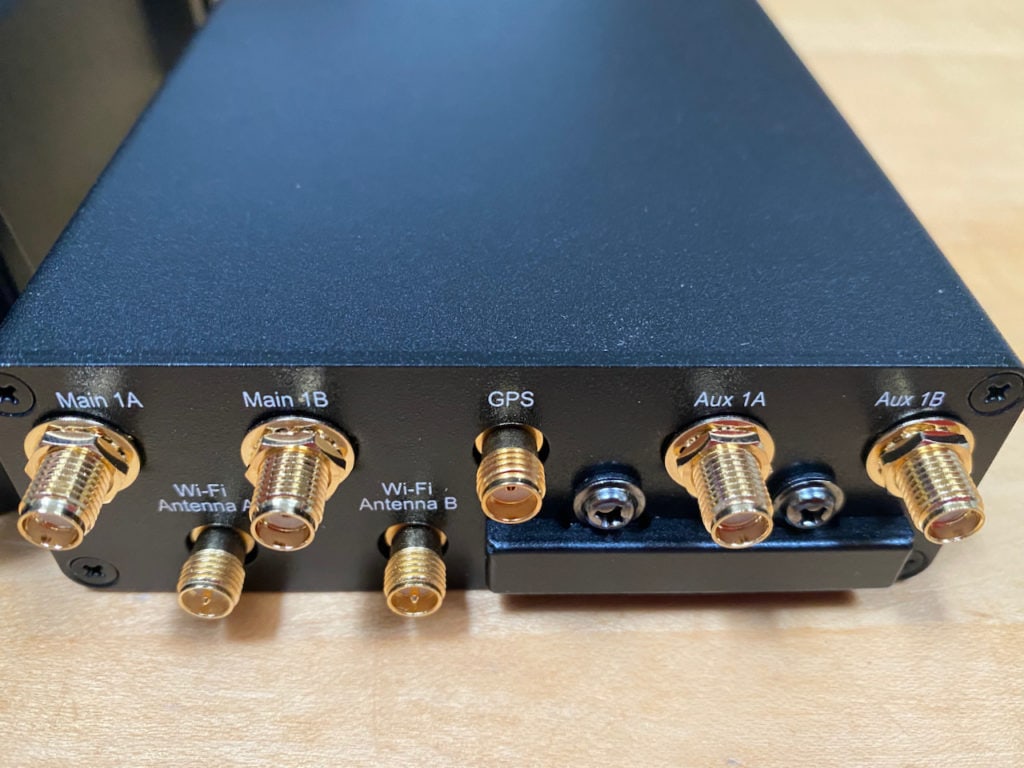
The real star of the Peplink products is the software, which has tons of features and options that add value having it on a boat. Managing internet usage on your boat covers some of these features, including dual SSIDs/networks & bandwidth shaping.
Peplink has a live demo showing most of their features. I would recommend logging in and checking out the Network and AP tabs to see the depth and configurability. You can also see some of the LTE specific features in my post on Grace’s redundant Internet setup which is my previous boat.
- Pepwave MAX Transit with CAT12 LTE modem (older model)
- Pepwave MAX Transit with CAT18 LTE modem (current model)
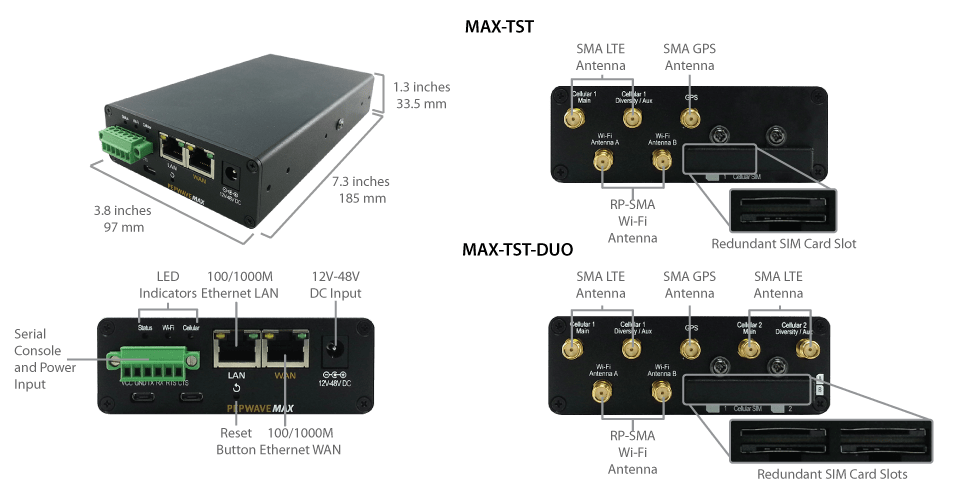
Mid-Level – Pepwave MAX BR1 MK2 – $599
The original Pepwave MAX BR1 was one of the most popular LTE routers available, and after a long wait, Pepwave has updated it to the MK2, which is an excellent solution.
It is very similar to the MAX Transit above in almost every way except performance. The MAX Transit has more powerful signal for your on boat WiFi networks, and a faster processor in case you’re doing some of the more advanced features. The MAX Transit also supports CAT 12 LTE networks, while the BR1 MK2 only has a CAT6.
Still, this is an amazing product, and for most people, it will be more than enough in terms of performance. If you have a larger boat, you might want to consider the MAX Transit, but I highly recommend the BR1 MK2.
Note: for any LTE product, make sure you get the latest LTE modem to ensure it supports all of the frequencies for your provider(s) and will have longevity. Right now Category 6 is the newest available for the MAX Transit.
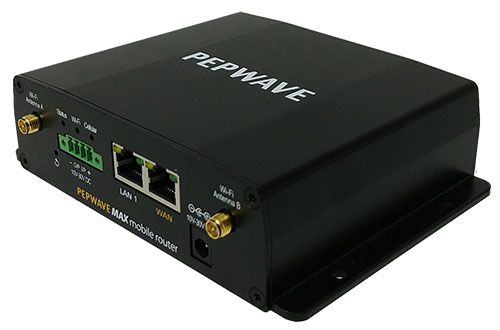
Netgear Nighthawk M1 – $350
The Netgear Nighthawk M1 is a fantastic all-in-one device. It has a powerful LTE radio, dual band WiFi, ethernet port, and external antenna ports. It’s considered a “hotspot” style device, but it is a very powerful version of those products.
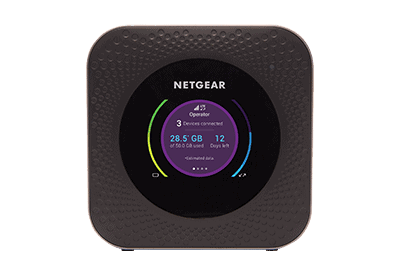
The Nighthawk has a big screen so you can see how many devices are connected, signal strength, and other useful info. It also has a good web-based interface so you can configure things. It’s definitely simpler to use than Peplink products, but that simplicity takes away some features.
Not only is it a great on-board router, but it is battery powered and can be taken ashore when needed. It’s a very versatile option that is more powerful than just using your phone.
Pair it with a Netgear MIMO antenna that can be stuck to a window for better signal, and you have a pretty powerful setup. You can even get adapters to connect to a fully outdoor antenna if you want to.
Note: The Nighthawk is best used with AT&T and T-Mobile. Verizon is not supported.
Home Router – $268
For those looking for a cheaper solution, a good choice is to pair a consumer grade home router with the Netgear LB1120 LTE modem/router. This allows you to have a familiar and simplified router software and interface for a much cheaper prices.
What you won’t get with this solution is the specific LTE and mobile features built into Peplink products. Some of these will help with managing LTE data usage and others will help the overall experience as I cover in Managing internet usage on your boat. If you have a lot of people uploading photos, or require more control over your LTE bandwidth usage, one of the more expensive solutions above would be better.
You also will have challenges adding another Internet source (commonly referred to as a WAN source) such as a MikroTik Groove. You can still do this somewhat if you chose the alternate dual port Netgear LB2120 which would allow you to connect the Groove upstream of the Negtear LTE router. It would use the Groove if you are connected to WiFi, and fall back to the Negear LTE router when not. However, the control of this is extremely basic, and may not work for all configurations.
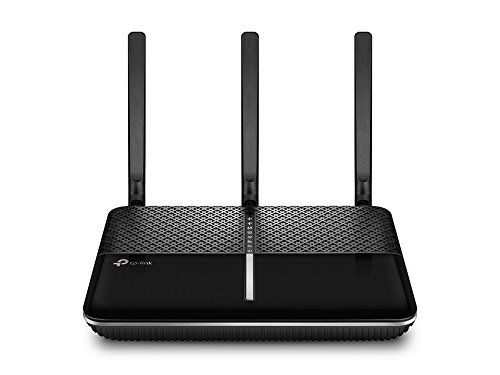
I would also look for a consumer style router that has a 12V DC power supply. In the example below, I’ve chosen one of the best performing home routers in the TP-Link Archer C2300 which just so happens to use a 12V DC power brick. Most of these products can take a varying DC power input of a volt or two, so you could connect it directly to DC power instead of using an AC outlet + inverter.
One of the pros/cons about this setup is that it is separate components. This is a pro because you can upgrade the individual pieces when new standards come out – say a new LTE frequency with better performance – rather than being stuck with a Pepwave product that you can’t upgrade. The con is that because there are multiple products, they don’t always play well together, and are surely not integrated to manage.
- TP-Link Archer 2300 router – $120
- Netgear LB1120 LTE modem/router – $118
- Netgear MIMO antenna – $30
DIY Heaven – $255
For those who want something inexpensive, and have the technical ability to set up the pieces, the DIY Heaven may be for you. I wrote an extensive article Modular, cheaper boat internet solution via Netgear and MikroTik that covers the details, and has had over 80 comments – there are a lot of configuration options as a result of these devices being DIY.
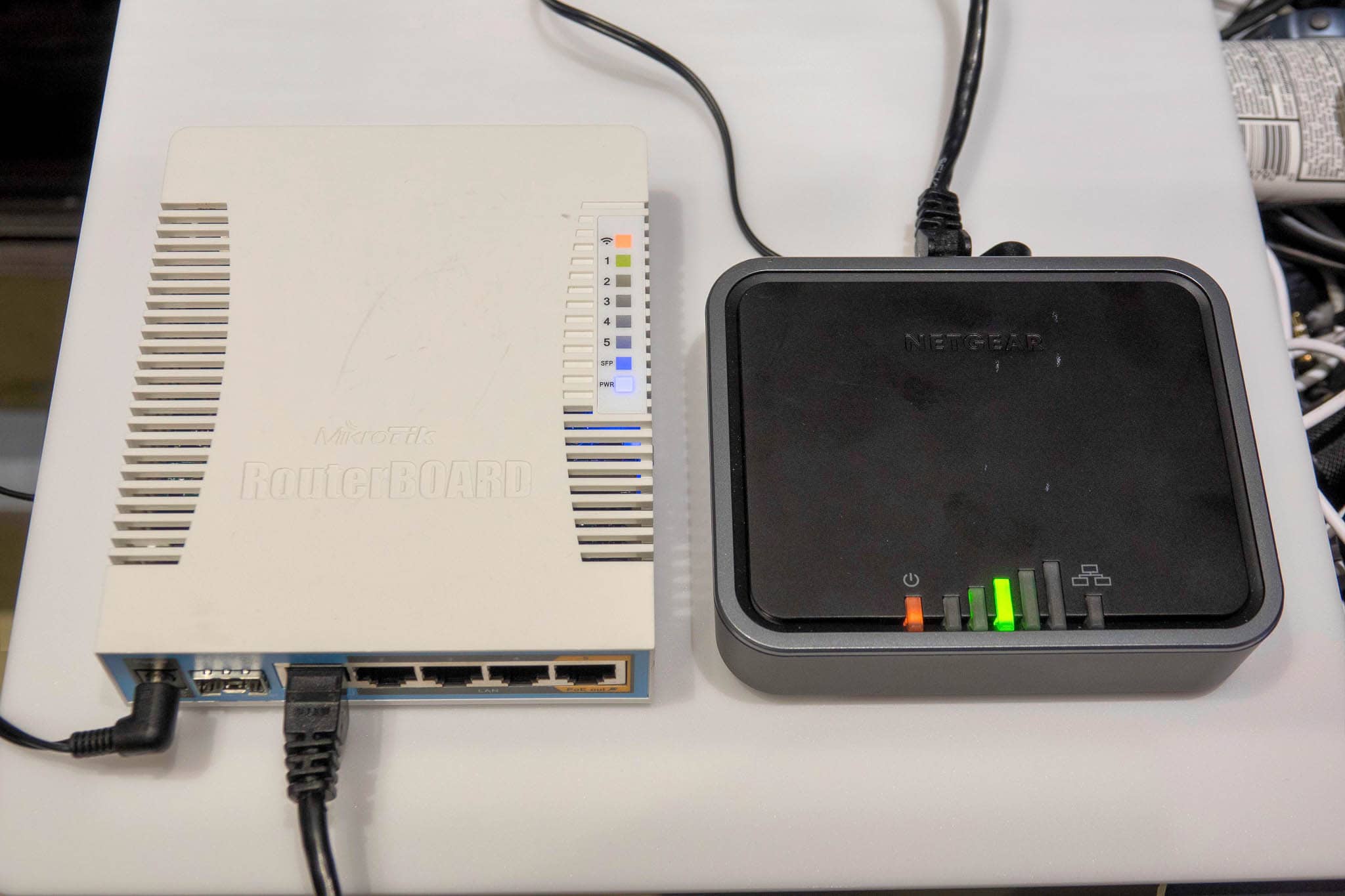
However, it is a very cost effective solution to having both LTE and WiFi aboard. Here are the list of components:
- MikroTik hAP AC router – $107
- Netgear LB1120 LTE modem/router – $118
- Netgear MIMO antenna – $30
Keep in mind, this configuration requires moderate to high technical ability – if you don’t understand some basic networking, and working with command lines, please don’t purchase this solution – look at any of the other solutions.
It is a very cost-effective solution with a lot of configuration options. The MikroTik router has one of the most powerful WiFi radios you will find anywhere, and can handle an amazing range of DC power options. It also has a ton of software options, that although daunting to configure, can provide you with a wealth of features few other routers can boast.
Add-Ons
There are a number of add-ons for the systems above that I commonly recommend.
If you are going to be boating in areas where you are away from good quality LTE signal, I highly recommend considering the following two options below:
- Outdoor LTE antenna
- Amplifier / booster
If you are going to be near marinas and more populated areas where LTE will be congested, and where WiFi networks are available, I would look at the MikroTik Groove remote WiFi option.
Outdoor LTE Antenna
An outdoor antenna, even without an amplifier, can dramatically improve your LTE signal, depending on the type and size of boat you have. I did a lot of testing in Best LTE antenna and booster for the boat, but in 2019 the best antenna is the Poynting OMNI-400 for around $200. You can read my review at Poynting OMNI LTE Antennas.
Amplifier
For all systems, you have the choice of them being amplified or “boosted” which I highly recommend if you plan on being in hard-to-reach cellular areas. weBoost is the best in the market in terms of performance and power. The weBoost 4G-X has been the leader for years, but the newest version, the weBoost Reach, has proven even more powerful. I can recommend either, although if you are purchasing right now, I would definitely go for the Reach.
- weBoost Reach – $499
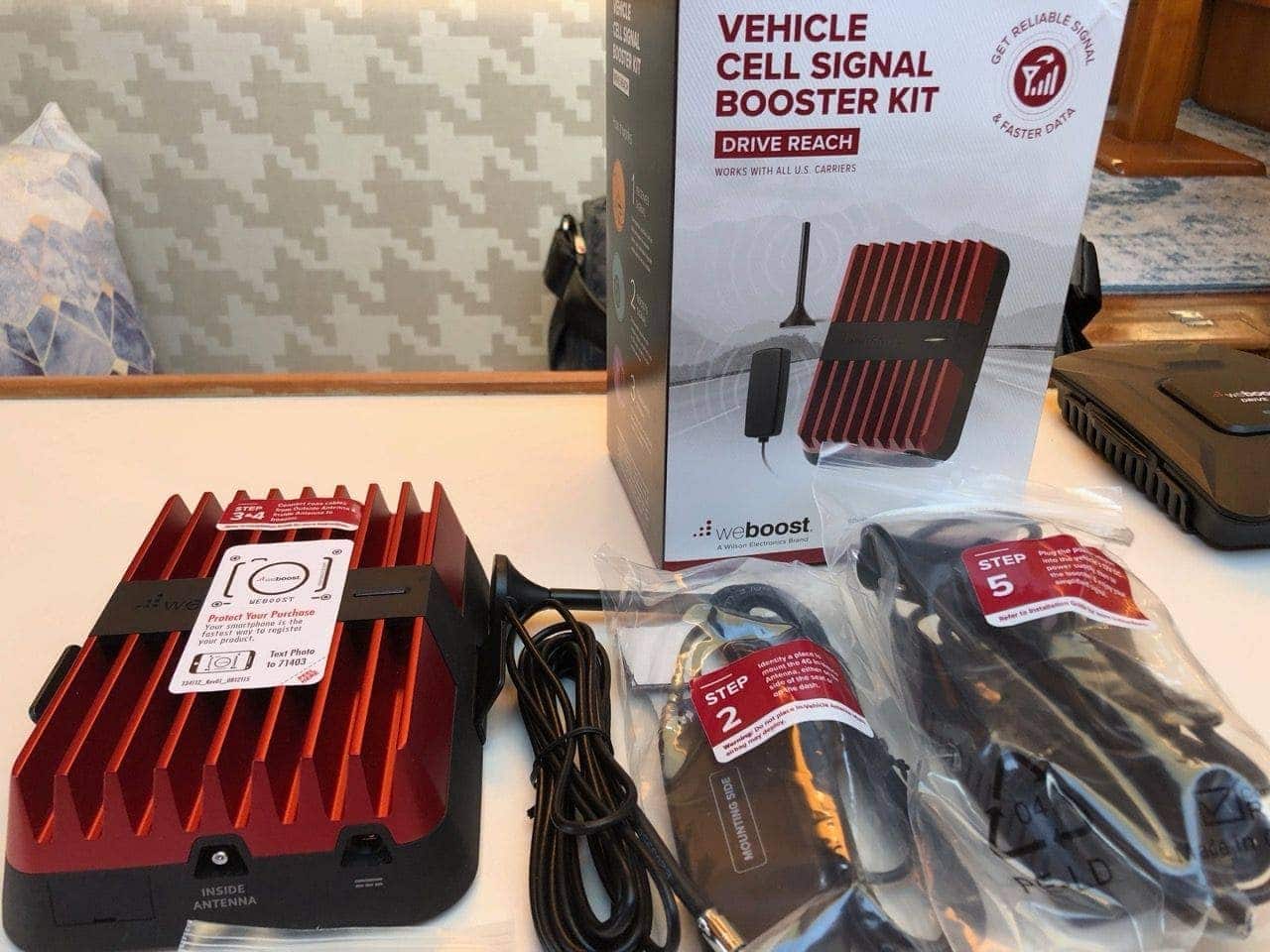
Remote WiFi
The only solution right now that I recommend is the MikroTik Groove, mainly because it has the best performance, and is the only solution that can grab remote 2.4Ghz and 5Ghz signals.
If you are going to be at a marina or other location where you can connect to a remote WiFi network and use that as your source of internet, this is the device to have. It saves using up your LTE bandwidth, and can be connected to any of the systems above in varying priorities so you can turn it on/off.
- MikroTik Groove – $99
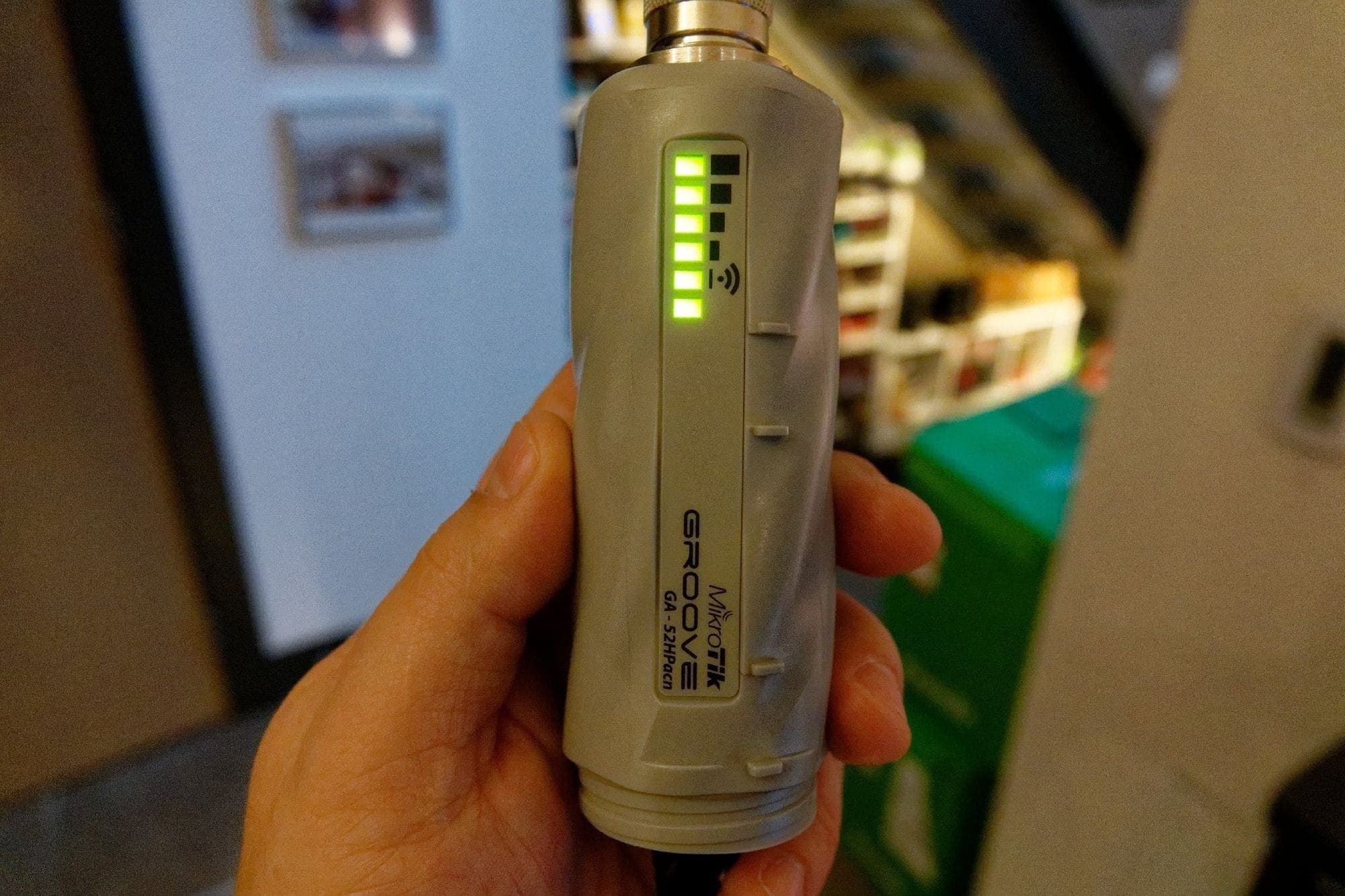
As with any MikroTik product, they are not easy to configure. See MikroTik Groove step-by-step setup guide for more help.
Switch
The Peplink products only have a single LAN ethernet port, which can be a limitation if you want to connect other wired devices. I have been using multiple TrendNET industrial 8 port switches for over a year myself in pretty terrible conditions, and have installed many for customers as well. If you need more ports, this is a great solution as it allows multiple DC power inputs, high speed ports, and a very rugged enclosure.
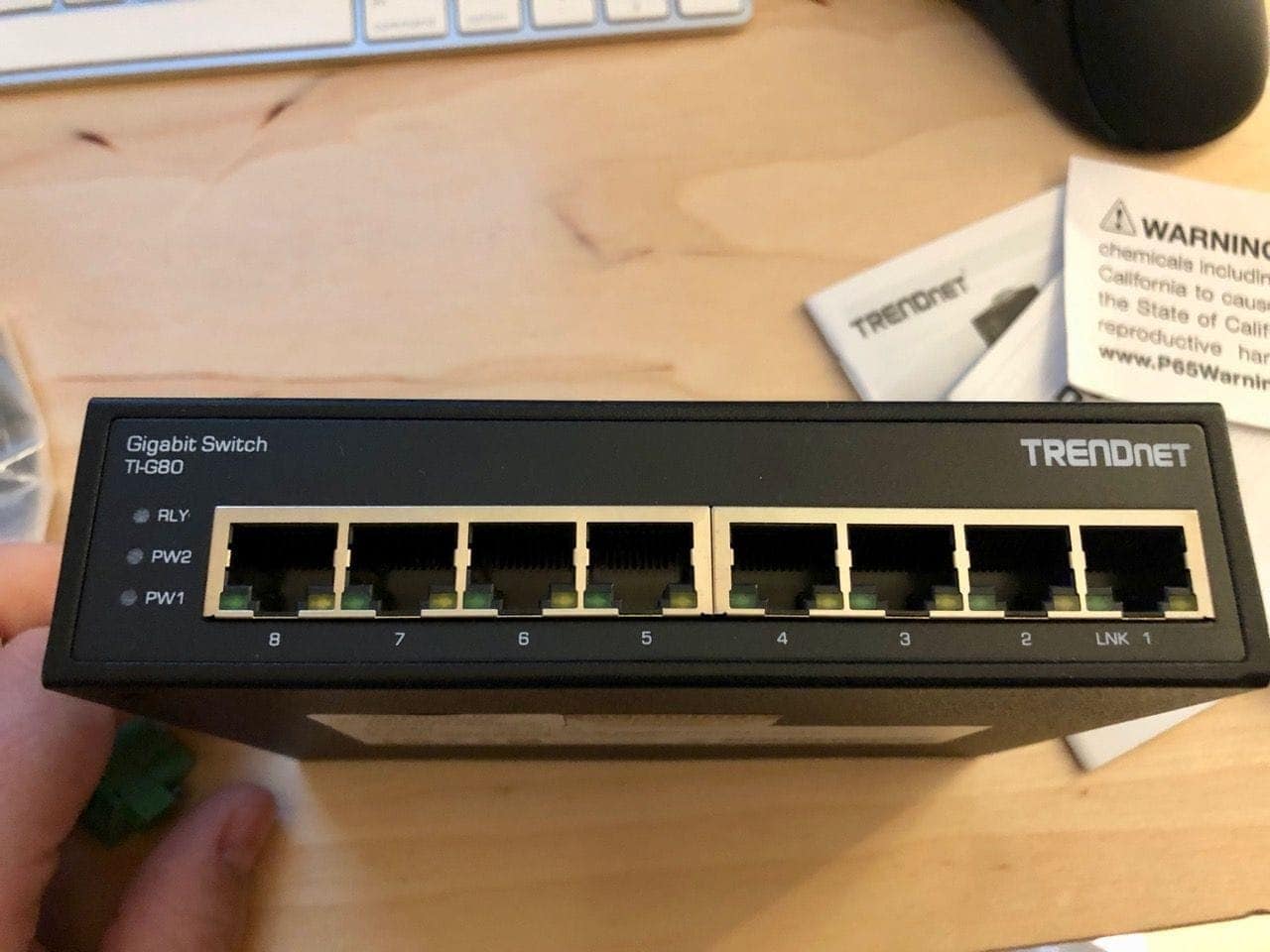
Installation
Whichever system you choose, make sure you install it correctly. WiFi and LTE are affected by interference, and both use antennas that need to be placed correctly. Failure to get this right will waste all the effort and money you’ve put into the system.
The router component should be placed centrally in your boat, or closer to where people would be consuming WiFi signals. It should be in an area where there isn’t a ton of interference or things like windows or metal to block the WiFi signal.
If you use an amplifier or just an external antenna, make sure you use quality cable between the components, and do not exceed the length provided by the manufacturers. Do not add converters, extenders or the like, as it will in many cases negate any benefit from the antenna/booster. LTE and WiFi antennas do not need to be mounted as high as possible up a sailboat mast, as they are not line of sight sensitive as much as VHF and other systems. Getting your antenna placement correct is key in making sure you get all the benefits of the antenna / booster.
Conclusion
Having reliable Internet on-board nowadays is considered a requirement for many people. Choosing the right system that fits your budget and expertise can be daunting with all of the choices on the market, but using some of the examples above, you should have a good place to start.
If you still have questions, please feel free to contact me – not only do I answer emails all the time about configurations, but I also am available for consultative designs.
Related Articles
- Marina WiFi is hard – why you need 5Ghz and a WiFi booster
- Rendezvous Internet Setup – my boat’s internet setup
- Modular, cheaper boat internet solution via Netgear and MikroTik
- MikroTik Groove step-by-step setup guide
- Best LTE antenna and booster for the boat
- Managing internet usage on your boat


